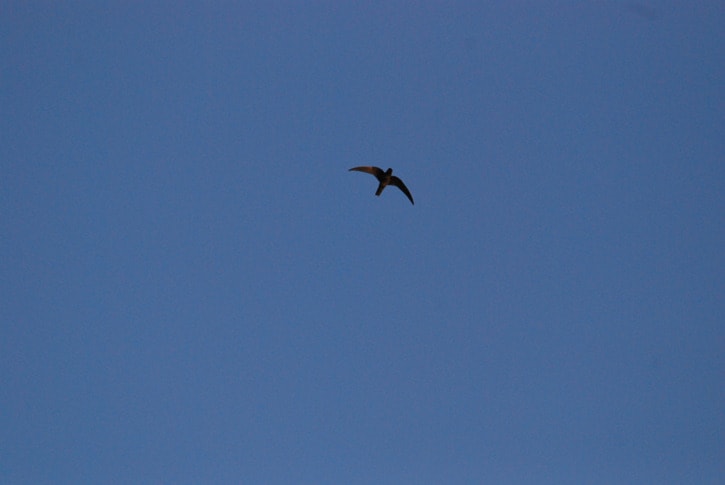There is a family of birds found throughout the world that is not well known to most casual observers. They are the swifts.
There are four species of swifts in Canada, three of which can be found in the West Kootenays. Black Swifts and Vaux’s Swifts are seen regularly around Nakusp, White-throated Swifts are found only along dry rocky cliffs such as those near Syringa Creek.
Scientists have long been undecided as to whether this group of birds is most closely related to the nighthawks or the hummingbirds. General appearance and behaviours would suggest nighthawks, but recent DNA comparisons suggest hummingbirds are their closest relatives.
Swifts are superb fliers and in fact spend most of their life in the air. During the long days of summer they will spend fifteen to eighteen hours a day flying.
Sleeping and nesting are the only things that cannot be done in the air. Copulation is thought to occur in mid-air, and they can also “roost” in mid-air. This aerial roosting is accomplished by finding suitable air currents that allow them to remain aloft with minimal effort. Recent studies even suggest that they may take brief cat-naps on the wing!
When seen in the air, swifts, particularly the Vaux’s Swift, are sometimes mistaken for swallows. Their general appearance and feeding behaviours are certainly similar. But a closer look will reveal some telltale differences. Swallows have much broader wings and a more substantial tail. Swifts have much narrower wings and in many species, a much shorter tail. Furthermore, swifts fly on very stiff wings that appear not to flex as the wing flaps. Black Swifts also have the stiff winged look but the entire length of the wing is a gentle backward curve. With a little practice even the beginning birder can see these differences between swallows and swifts.
Both the Vaux’s and the Black Swifts are dark in colour, the Black a little darker. At first this might seem to be enough to separate them from swallows, but when watching flying birds from below against a bright sky, colour on the undersides if often very difficult to determine. The White-throated Swift is very similar in size and shape to the Black Swift, but a close look will reveal the black and white pattern of the White-throated.
Vaux’s Swifts frequently nest inside hollow trees where they suspend their nests on the inside walls. They will sometimes use chimneys in the same manner. Saliva is one of the main components of these nests. It serves as the glue that holds the whole thing together.
One species of swift found in Asia, makes it nest entirely of saliva. These form the main ingredient in the making of bird’s nest soup.
White-throated and Black Swifts are generally cliff nesters. Black Swifts usually build on high remote cliffs, often in association with waterfalls. Only a very small number of nests have ever been found in B.C.
